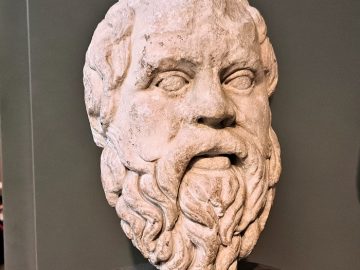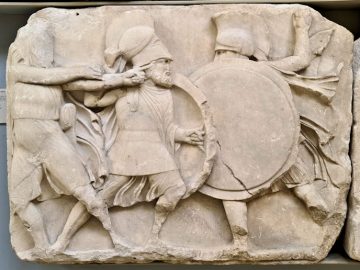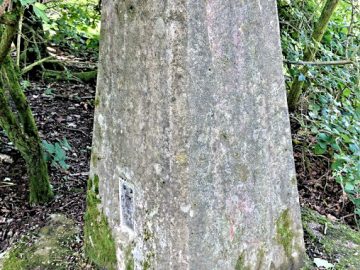This is a basic 3D scan of the sculpture of Edward Winslow which can be found in St Andrew Square, in the centre of historic Droitwich Spa in western England. Winslow was one of the original Pilgrim Fathers who sailed from Plymouth in England, to a new life without religious persecution in North America, aboard the Mayflower in 1620. The sculpture commemorates him and his first steps onto land in North America at what is now called Plymouth Sound. In fact, the stone on which the sculpture stands represents Plymouth Rock where he made his first steps onto land there, which is now an American icon. It was sculpted by Sara Ingleby-Mackenzie and unveiled in 2009.
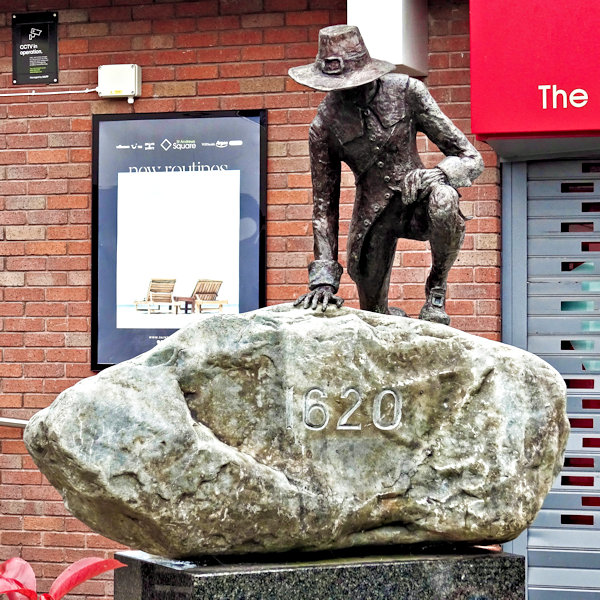
Quick summary of this 3D creation
Overview: A basic scan of the sculpture of Pilgrim Father Edward Winslow in St Andrew Square shopping centre, Droitwich Spa.
Location: St Andrew Square, Droitwich Spa, western England, United Kingdom [map].
Date/era: Modern, 2009.
Software used: Sony 3DCreator Android app, Nomad Sculpt Andoid app, Meshmixer.
Intended use: 3D printing, preferably in a resin printer at around 55mm or more high.
The information displayed on the plaque with the sculpture reads ‘Born in Droitwich in 1595, Edward Winslow sailed to America aboard The Mayflower in 1620 as one of the Pilgrim Fathers, determined to start a new life free from religious persecution. After a terrible crossing, with many deaths from disease, bad weather drove the ship into what is now known as Plymouth Sound where it cast anchor. This sculpture depicts Winslow taking his first steps onto land at what is now known as Plymouth Rock. The rock became an American icon, a symbol of intrepid discovery, liberty and freedom of conscience.‘
The scan was made with the Sony 3DCreator app on an Xperia XZ2 smartphone. Being a challenging item to 3D scan with a phone app, it had to be done in four parts: the main body, the head, the stone and the foot at the rear of the stone. Therefore the model, especially the stone Winslow is set upon, cannot be considered an exact digital duplicate of the physical sculpture. That includes the text ‘1620’ carved into the stone, as it was too shallow for 3DCreator to pick up. However, the scanned model should be adequate as a basic representation of the sculpture of Edward Winslow for many uses.
The four separate 3D scans were then assembled using the Nomad Sculpt Android app where the scan was tidied and edges sharpened. Despite being intended as a 3D sculpting application, Nomad Sculpt has proved an excellent tool for processing and tidying up 3D scans, as it has many tools for trimming, sculpting and smoothing, as well as a gizmo tool to help you translate, scale and rotate. It was used on a Samsung Galaxy Tab S6 Lite as it has a pen/stylus that works very well with the pressure sensitivity feature of Nomad Sculpt, allowing easy and sensitive adjustments to be made.
The model was then post-processed using Meshmixer to remesh to a sensible file size. That was very important as the need to use a high polygon count in Nomad Sculpt, in order to carve out fine details and sharp edges, results in a large file size. That may not seem too important, but a smaller file size loads faster in the Sketchfab viewer, and also allows for quicker downloads of 3D model files to print. And, after sharpening edges in Nomad Sculpt, there was little loss of fine details after remeshing. You can see the finished model on Sketchfab below (click the play button to load the model and view it in 3D).
The 3D print in the photo below was made using a Monoprice Mini SLA printer with Elegoo water washable resin. It did a good job of recreating the detail in the model, even though the print was only 60mm long. That print was made from a copy of the model which was hollowed in Meshmixer (with 2mm thick walls) and one of the resin-drainage holes in the base was left open to prevent the potential for temperature variations in the air-filled void causing cracks. It was also tested using Flashforge PLA on one of their Adventurer 3C printers: it printed fine at around 100mm long but the reduced detail and need to remove support material makes resin a much better option for this model.
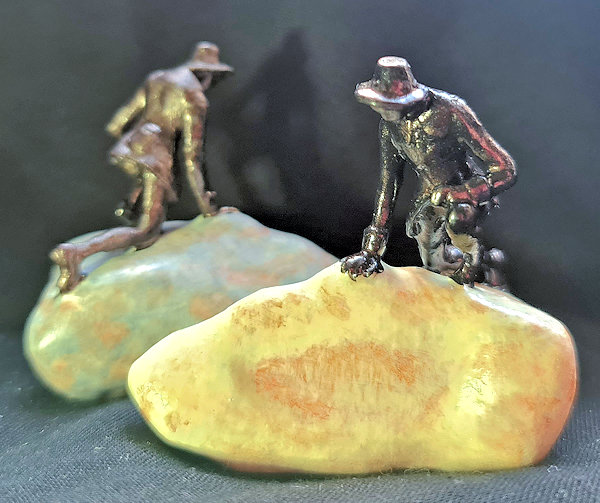
However, if you were to make a PLA print (or your choice of other filament) then coating with high-build primer, and painting perhaps with craft acrylics, should allow you to create a fairly good result for your desk or coffee table. The finished resin print was then painted with The Army Painter, and Humbrol bronze-effect, paints and given a coat of anti-shine varnish, to try to recreate the look and feel of the original.
More information on this work of art can be found at the following web pages:
https://www.worcesternews.co.uk/news/4080158.unveiling-of-edward-winslows-statue
https://www.visitdroitwichspa.com/droitwich/public-art-droitwich-spa
http://humanities-research.exeter.ac.uk/voyagingthroughhistory/items/show/42
So finally, in case you’d like to use the methods in this project for your own work, let’s recap on what was involved:
- The Sony 3DCreator Android app was used to create a basic 3D scan on a smartphone, which provided a good representation albeit with some softening of sharp details and with the stone scanned to a lower quality than the pilgrim.
- Due to difficulties with the size and surface finish of the pilgrim sculpture, the scan was made in four distinct parts: the body, the stone, the foot at the back of the stone and the head.
- The Nomad Sculpt Android app was used to assemble the four parts and tidy the 3D scan, including cutting away unwanted material, smoothing and sculpting poorly scanned areas, and sharpening edges with the crease tool.
- On a PC Meshmixer was used to solidify/remesh the model, to achieve a much smaller file size and to make it hollow from the bottom to save material for the resin printing.
- The finished 3D model was then test printed in resin and PLA, and found to print to an acceptable quality with both material types.
- Due to the amount of detail in the final model, resin printing was found to be the best method of 3D printing it, fused-filament printing lacking detail (even at a larger size) and requiring much removal of support material.
Please note that this scan is provided without any license for commercial use. It is intended simply as a souvenir of Droitwich Spa you can have the fun of printing yourself. And, of course, it is intended to be a motivation for you to visit beautiful Droitwich Spa yourself and, maybe while shopping in Saint Andrew Square, take a few minutes to take in the beauty of this sculpture of one of the United States of America’s Pilgrim Fathers: click here to see the location in Google Maps.

